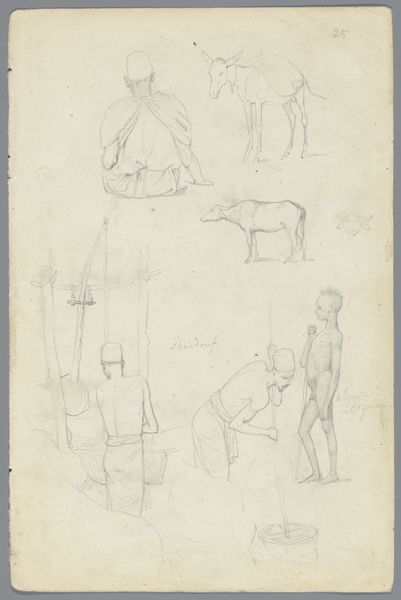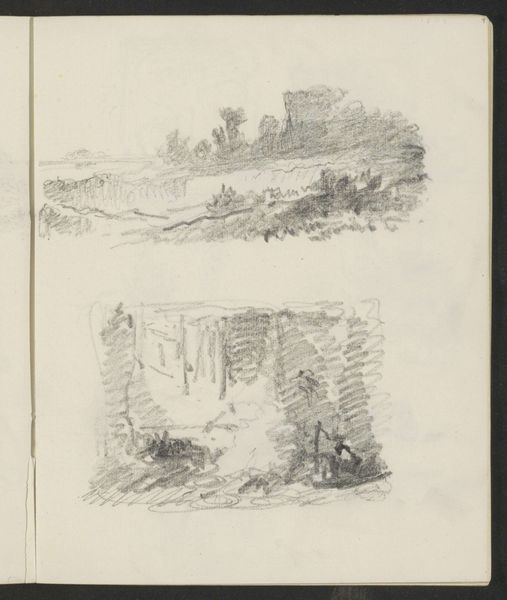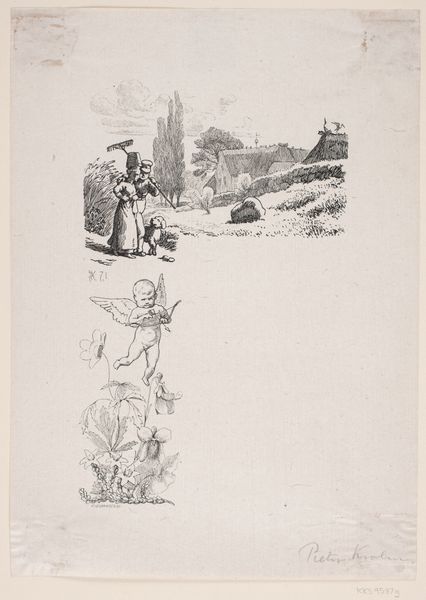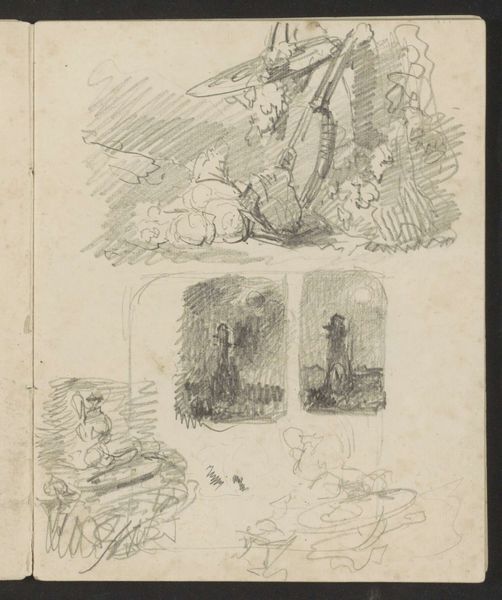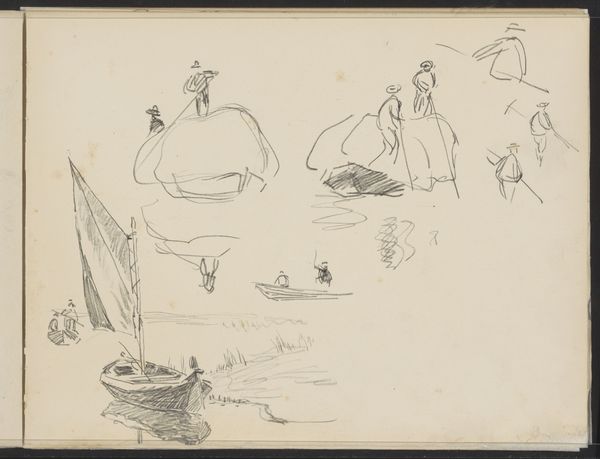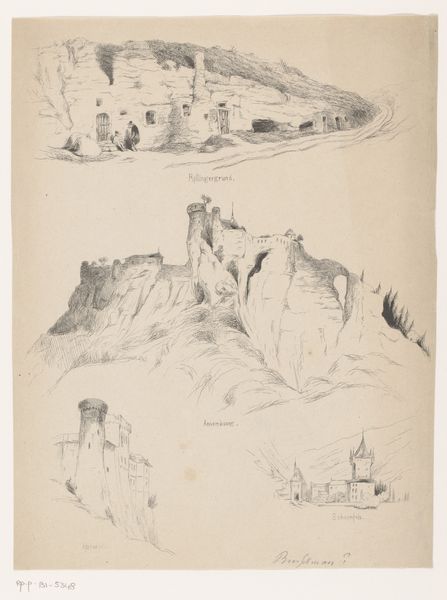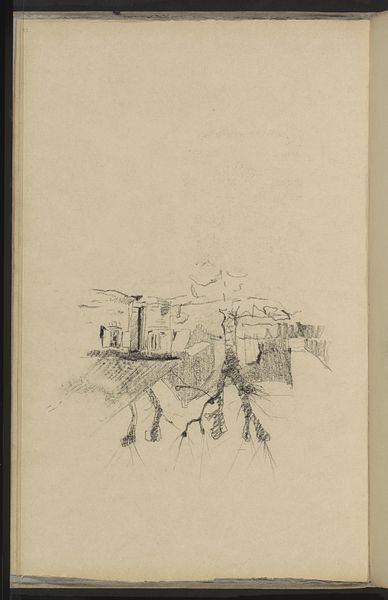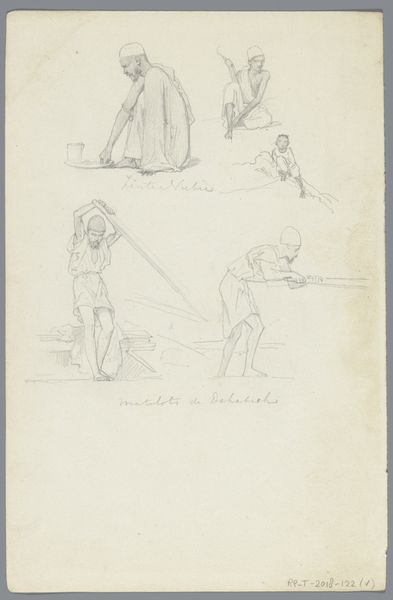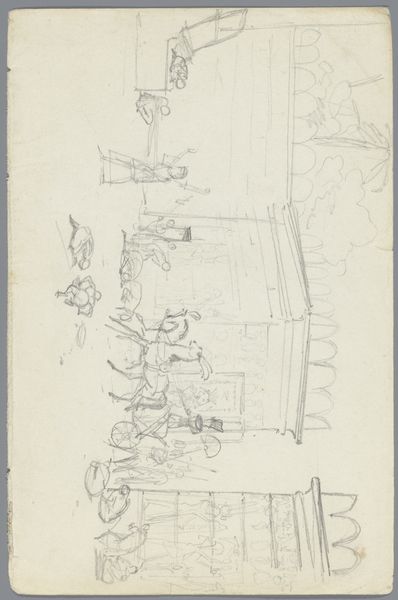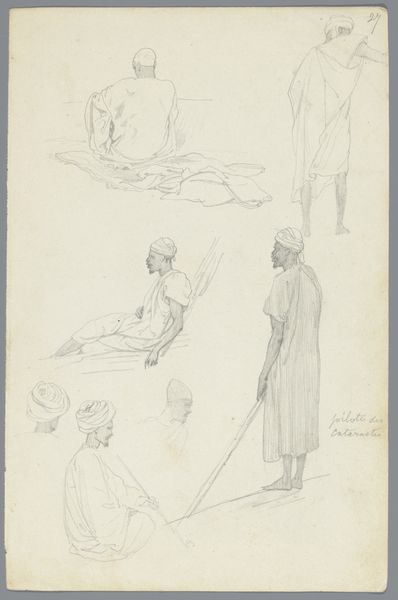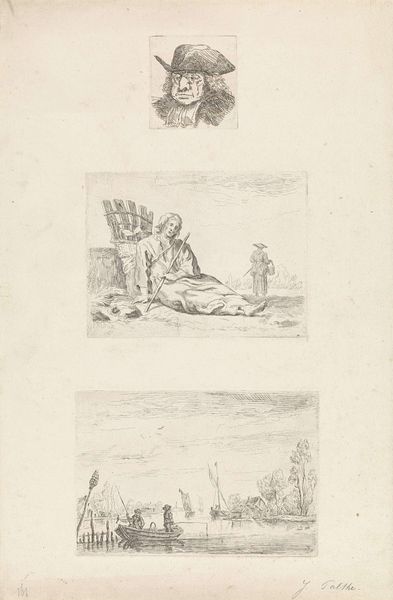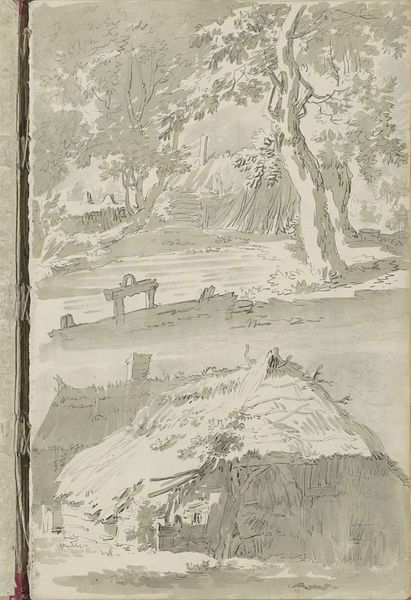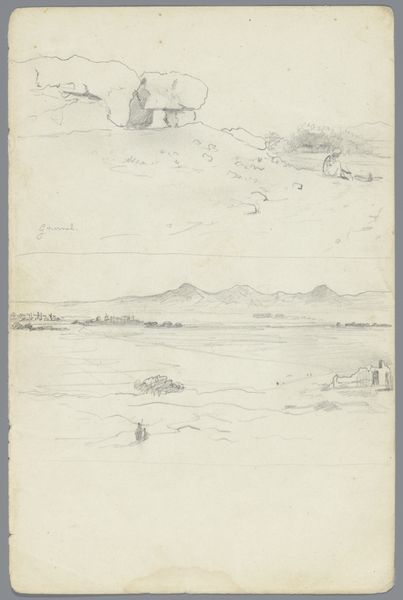
De kok van de scheepsbemanning, figuurstudie, landschap met vee c. 1858 - 1859
0:00
0:00
drawing, pencil
#
portrait
#
drawing
#
16_19th-century
#
landscape
#
pencil
#
orientalism
#
academic-art
Dimensions: height 191 mm, width 126 mm
Copyright: Rijks Museum: Open Domain
Curator: This is a pencil drawing by Willem de Famars Testas, dating back to around 1858-1859. It's called "The cook of the ship's crew, figure study, landscape with cattle." Editor: It's interesting to see these seemingly separate vignettes together on one page. The top sketches of the cook feel very intimate, almost like a private study, while the landscape with cattle is more expansive. What catches your eye about this work? Curator: I'm drawn to the contrast in labor represented. Look at the cook meticulously preparing food – the drawing emphasizes the specific actions involved, the tools, the small fire. Then consider the cattle, depicted almost en masse, their labor abstracted into simple pastoral imagery. This contrast reveals how labor itself is visualized and valued differently depending on its social context. How does the artist’s choice of medium impact that? Editor: Interesting point! Well, the pencil work gives everything a sort of ‘draft’ quality, highlighting process over polished product, maybe democratizing those different types of labor in a way. It's all just marks on paper, whether it’s defining a cook’s gesture or the shape of a cow. Curator: Exactly! And that "draft" quality connects to the social context. These are studies, perhaps made in preparation for larger works. De Famars Testas, associated with Orientalism, may have viewed these sketches as raw material to be refined and sold, furthering certain notions and attitudes tied to colonial settings and material exchange. Is he objectifying the cook for future financial gain, in effect? Editor: I never thought about it that way. So, the very act of sketching these scenes and potentially selling them changes the value and meaning of what he observed. It adds a layer of social commentary. Curator: Precisely! And understanding the materials, the method of production, and the intended market sheds light on the complex power dynamics at play within seemingly simple drawings. Editor: Thanks. I'm finding it so interesting to examine how those colonial perspectives are subtly embedded in artistic practice! Curator: Absolutely. Paying attention to those subtle power dynamics at the foundational level of materials and the creative process, can reveal so much.
Comments
No comments
Be the first to comment and join the conversation on the ultimate creative platform.
